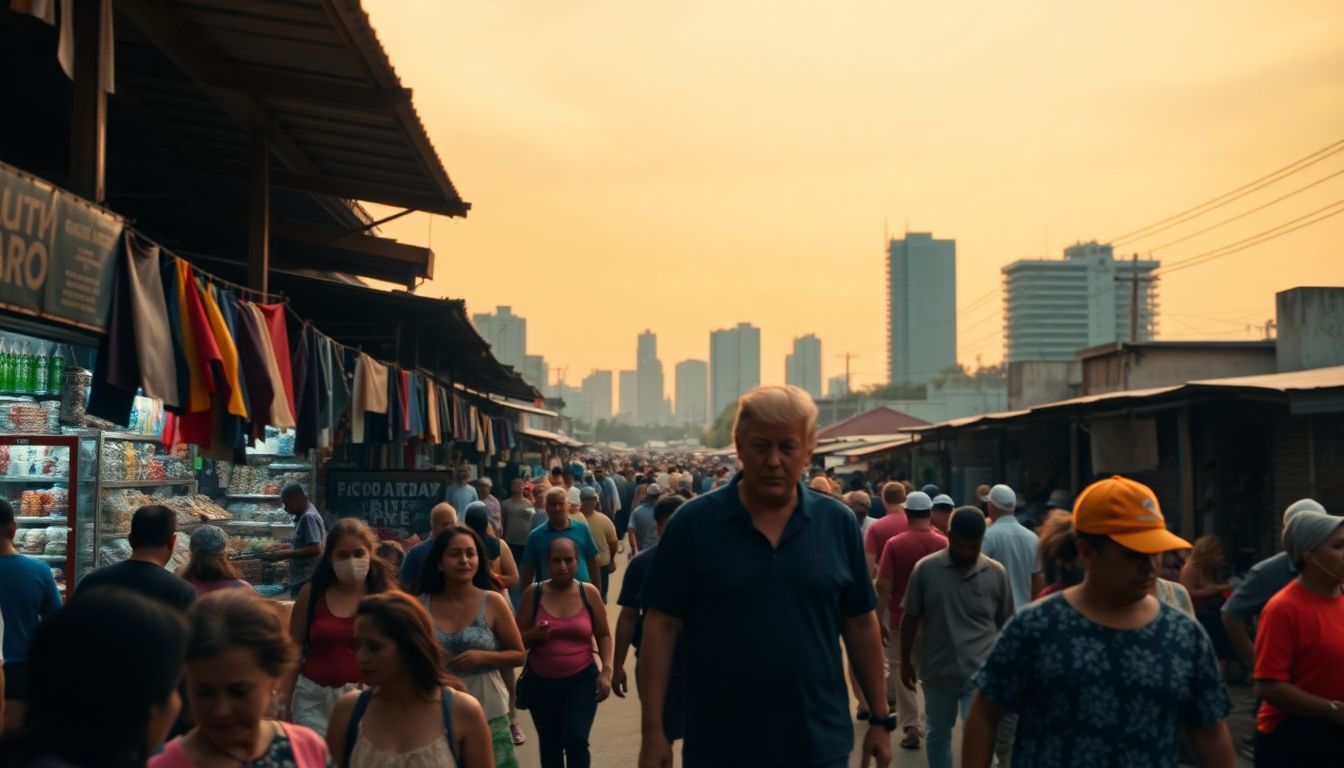
Imagine a small coffee farmer in Honduras. They had a steady income exporting beans to the U.S. Then, new tariffs hit, raising costs and slashing profits. Now, they're struggling. How much did Donald Trump's presidency impact Central America? His policies still shape businesses there, even now. We'll look at trade, immigration, and more, seeing how his actions ripple through the region.
Trade and Tariffs: Lingering Effects
Donald Trump’s administration brought big changes to trade. He put tariffs on many goods. These taxes on imports had a direct effect. Central American businesses felt it right away.
The Impact of Tariffs on Key Industries
Tariffs hit industries hard. Think about textiles from Guatemala or farm products from Costa Rica. These tariffs made goods more expensive in the U.S. Central American businesses lost revenue. They had to shift production or compete at a disadvantage. Some even closed down, cutting jobs.
Renegotiation of Trade Agreements
Trump talked about changing trade agreements. The CAFTA-DR deal was a big one. The uncertainty made investors nervous. Businesses didn’t know what to expect. This caution slowed down investments and growth.
Supply Chain Disruptions
Tariffs messed up supply chains. Businesses had to find new markets and suppliers. It took time and money. Some couldn't adjust and suffered setbacks. The supply chain disruptions raised costs and made it harder to do business.
Immigration Policies and the Labor Market
Immigration policies changed under Trump. This impacted the workforce and the flow of money. Central American families depend on money sent from relatives working abroad. Tougher rules affected these flows.
Remittance Flows and Economic Stability
Remittances are important to Central American economies. These payments help families pay for food, housing, and education. Stricter immigration enforcement reduced remittances. Less money flowing in destabilized the economies.
Impact on Agricultural Labor
Central American immigrants work in U.S. agriculture. They pick crops and do hard labor. Tighter border controls made it harder to find workers. This raised labor costs for farmers in both regions. Some crops went unharvested.
The "Northern Triangle" and Investment Deterrence
El Salvador, Guatemala, and Honduras form the "Northern Triangle." Trump's policies discouraged investment there. He cut aid and threatened more actions. Businesses hesitated to invest in such an unstable environment.
Foreign Aid and Development Programs
Foreign aid changed under Trump. He cut funding to some programs in Central America. This affected healthcare, education, and infrastructure. These cuts had consequences.
Cuts to Aid and Their Impact
Specific programs faced cuts. Healthcare initiatives, schools, and road projects suffered. This hurt local communities. Businesses that relied on these projects also felt the impact.
Shifts in Development Priorities
U.S. priorities shifted. There was more focus on security and less on social programs. This change affected businesses that worked in development. Some lost contracts and had to downsize.
The Role of Private Sector Investment
Trump wanted the private sector to invest more. The idea was to replace foreign aid with business deals. However, this didn't happen as much as hoped. Many businesses were still hesitant because of the risks.
Geopolitical Uncertainty and Investor Confidence
Trump's words and actions created uncertainty. Businesses don’t like uncertainty. It makes it hard to plan and invest. Geopolitical instability hurt investor confidence.
Political Instability and Risk Assessment
Trump's rhetoric added to political instability. This made investors see Central America as riskier. They demanded higher returns or avoided the region altogether. Risk assessments went up.
Shifting Alliances and Trade Opportunities
U.S. relations with other countries changed. For example, relations with China shifted. This created new trade opportunities and challenges. Central American businesses had to adapt.
The Long-Term Outlook
The long-term effects of Trump’s policies are still unfolding. Geopolitical factors play a role. Regional developments matter too. The future depends on how Central American businesses adapt and innovate.
Conclusion
Trump's policies continue to affect Central American businesses. Trade, immigration, and foreign aid all play a role. Geopolitical uncertainty remains a factor. The future will depend on how businesses navigate these challenges. Central America must keep changing and growing despite these difficulties.
